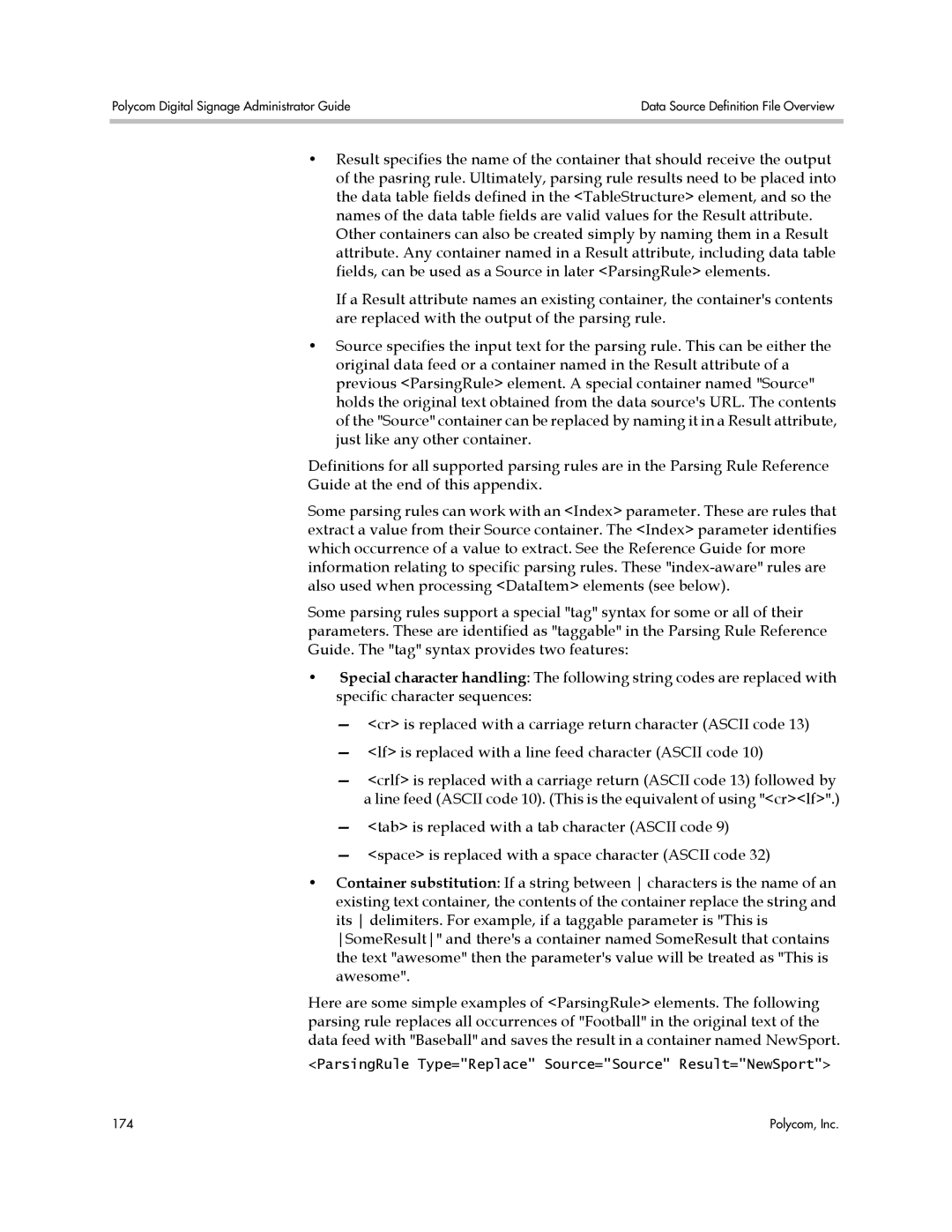Polycom Digital Signage Administrator Guide | Data Source Definition File Overview |
|
|
•Result specifies the name of the container that should receive the output of the pasring rule. Ultimately, parsing rule results need to be placed into the data table fields defined in the <TableStructure> element, and so the names of the data table fields are valid values for the Result attribute.
Other containers can also be created simply by naming them in a Result attribute. Any container named in a Result attribute, including data table fields, can be used as a Source in later <ParsingRule> elements.
If a Result attribute names an existing container, the container's contents are replaced with the output of the parsing rule.
•Source specifies the input text for the parsing rule. This can be either the original data feed or a container named in the Result attribute of a previous <ParsingRule> element. A special container named "Source" holds the original text obtained from the data source's URL. The contents of the "Source" container can be replaced by naming it in a Result attribute, just like any other container.
Definitions for all supported parsing rules are in the Parsing Rule Reference Guide at the end of this appendix.
Some parsing rules can work with an <Index> parameter. These are rules that extract a value from their Source container. The <Index> parameter identifies which occurrence of a value to extract. See the Reference Guide for more information relating to specific parsing rules. These
Some parsing rules support a special "tag" syntax for some or all of their parameters. These are identified as "taggable" in the Parsing Rule Reference Guide. The "tag" syntax provides two features:
•Special character handling: The following string codes are replaced with specific character sequences:
—<cr> is replaced with a carriage return character (ASCII code 13)
—<lf> is replaced with a line feed character (ASCII code 10)
—<crlf> is replaced with a carriage return (ASCII code 13) followed by a line feed (ASCII code 10). (This is the equivalent of using "<cr><lf>".)
—<tab> is replaced with a tab character (ASCII code 9)
—<space> is replaced with a space character (ASCII code 32)
•Container substitution: If a string between characters is the name of an existing text container, the contents of the container replace the string and its delimiters. For example, if a taggable parameter is "This is SomeResult" and there's a container named SomeResult that contains the text "awesome" then the parameter's value will be treated as "This is awesome".
Here are some simple examples of <ParsingRule> elements. The following parsing rule replaces all occurrences of "Football" in the original text of the data feed with "Baseball" and saves the result in a container named NewSport.
<ParsingRule Type="Replace" Source="Source" Result="NewSport">
174 | Polycom, Inc. |
